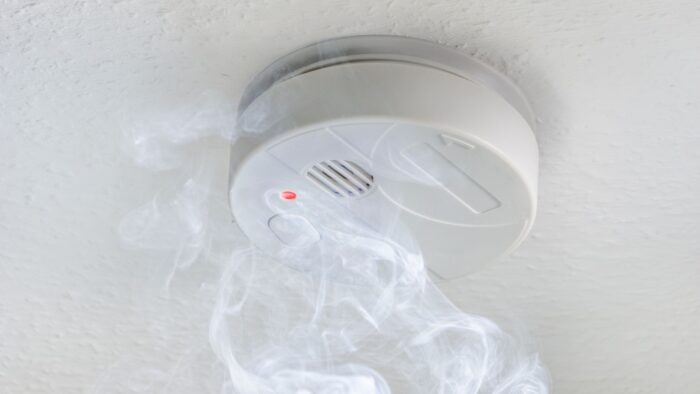
The modern era has seen a significant rise in vaping, especially among teenagers, permeating school campuses across the globe. The advent of sleek, easily concealed vaping devices has contributed to a sharp increase in student vaping, rendering it a top concern for educators, parents, and health practitioners alike. These devices are not only small and discreet, but they also emit less vapor than traditional e-cigarettes, enabling students to vape in classrooms undetected.
The causes of this increase are multifaceted, with factors such as aggressive marketing strategies targeted towards youths, perceived harmlessness compared to traditional cigarettes, and the allure of flavors like mint and fruit punch, making e-cigarettes particularly appealing to teenagers. Moreover, the ease of accessing these products online and in local stores has fueled this ongoing trend. The pervasive use of these devices in pop culture and social media has further glamorized vaping, leading to its acceptance and normalization among adolescents.
Implementation of Vape Detection Systems in Schools

The implementation of vape detector technology in schools involves a combination of strategic planning, investment, and training. It starts with identifying areas of the school most prone to vaping incidents, often bathrooms and locker rooms. The devices are then installed in these areas, often on ceilings or high on walls, to maximize their detection capabilities.
Schools also need to consider the financial implications of such an undertaking. While the initial investment for vape detectors can be considerable, it is essential to consider the long-term benefits of the technology. Reducing vaping incidents can lead to a healthier student body, decreased disruptions to learning, and potential savings in healthcare and disciplinary costs.
Successful implementation also involves proper training for staff members. Administrators must be familiar with the technology, understand how to interpret alerts and respond appropriately to incidents. This ensures a quick and effective response, reinforcing the message that vaping is taken seriously and will not be tolerated.
Effectiveness and Impact of Vape Detection Technology
The effectiveness of vape detection technology is evident from the decreasing number of vaping incidents reported in schools where these systems have been installed. For instance, the Fairhope Middle School in Alabama reported a 70% reduction in vaping incidents within just a few months of installing vape detection technology. Such statistics are a testament to the efficacy of these technologies in deterring students from vaping.
Vape detection systems not only act as a deterrent but also help create a culture of accountability among students. Knowing that their actions can be detected makes students think twice before deciding to vape on school premises. Moreover, this technology allows for the immediate identification and counseling of those involved, providing an opportunity for education and intervention.
The impact of vape detection extends beyond schools to the wider community. The decrease in vaping incidents promotes a healthier environment, which can lead to a reduction in vaping-related health issues among teenagers. As such, technology is not only a tool for enforcing rules but also an instrument for promoting public health.
Addressing Challenges and Concerns

While vape detection technology promises great benefits, it’s not without challenges and concerns. One major concern is privacy. Although these devices don’t capture images or recordings, the idea of surveillance can be uncomfortable for some students and parents. Schools must carefully communicate the purpose and operations of these devices, emphasizing that their main aim is health and safety, not an invasion of privacy.
Moreover, the technology is not infallible. False positives can occur due to other aerosols or high humidity levels, leading to unnecessary investigations and potential disruptions. Constant calibration and updates are necessary to minimize these occurrences and maintain the detectors’ reliability.
The cost of implementing vape detection technology can also be a significant hurdle for many schools. While the long-term benefits often outweigh the initial investment, it can be challenging for schools with limited resources to afford such a system. Grant programs and funding options need to be explored to help these schools acquire the technology.
Promoting Education and Prevention Strategies alongside Technology
While vape detection technology plays a critical role in combating the vaping epidemic, it is not a standalone solution. It must be complemented by education and prevention strategies. The end goal is not just to catch students in the act, but to discourage them from starting to vape in the first place.
Schools should integrate anti-vaping education into their curricula, teaching students about the health risks associated with vaping and nicotine addiction. Using credible sources and real-life examples can help to convey this message effectively. Additionally, inviting healthcare professionals or ex-vapers to share their experiences can have a profound impact.
Furthermore, parents should be involved in these prevention strategies. Providing them with resources to educate their children about the dangers of vaping and encouraging open conversations at home can strengthen these efforts. Ultimately, a combined approach of technology, education, and open communication is the most effective strategy for combating the vaping epidemic in schools.
The Dangers of Vaping: Health Risks and Addiction

Often marketed as a safer alternative to conventional smoking, e-cigarettes have been found to carry serious health risks. Despite the lack of combustion, e-cigarettes deliver nicotine, an addictive substance with harmful impacts on adolescent brain development. Additionally, many vaping devices contain other toxic chemicals that can lead to long-term health issues such as heart disease, respiratory disorders, and even cancer.
Nicotine is particularly dangerous for teenagers whose brains are still developing. Studies have shown that nicotine can alter the formation of synapses, crucial for learning, memory, and attention. Moreover, early nicotine use can establish a pattern for future addiction. Youths who vape are significantly more likely to transition to conventional cigarettes, which carry even more health risks.
The immediate health effects of vaping extend beyond physical ailments to include mental health issues. Research has linked adolescent vaping to increased risks of depression, anxiety, and other mood disorders. The alarming reality is that the long-term health effects of vaping are still largely unknown, as e-cigarettes have only been around for a little over a decade. Thus, prevention and early intervention are crucial to protect the health of our youth.
Conclusion
Vape detection technologies provide a useful tool for schools to monitor student behavior and enforce anti-vaping rules. However, the best way for schools to prevent students from vaping is through education and awareness. By educating their students about the dangers of vaping, schools can help ensure that their students are making informed decisions when it comes to their health. With this knowledge in hand, hopefully, more millennials will choose not to pick up this dangerous habit.
















